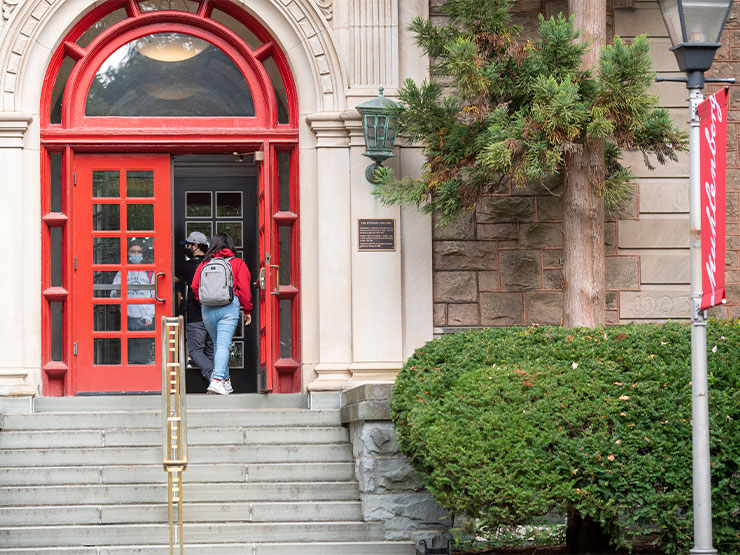College Tuition Costs Have Changed Over the Years — Here’s How
As the total price of college (tuition plus housing, a meal plan, etc.) has escalated, colleges have implemented financial aid programs to expand access and help families afford the cost.
The introduction of financial aid means that the actual cost of a college to a student and family is not always a matter of what the college charges. It is the remaining costs after financial aid (which includes scholarships, grants, loans, and student employment) is deducted from a student’s bill. This can make some college options that seem financially out of reach more affordable than you might expect.

The difference between the overall charges and the final cost to a family is often most notable at private colleges and universities. While the lower in-state college tuition costs of public institutions make them appear to be the more affordable colleges, private colleges and universities often dedicate more of their resources to financial aid packages. This can often make private colleges more affordable than in-state public universities.
Most U.S. colleges, including Muhlenberg, also use financial aid as part of their recruitment strategy. As colleges continue to shape (rather than simply fill) their classes, money has become a means to enroll the students that an institution most wants. This phenomenon is called “preferential packaging.” Preferential packaging means that the students a college would most like to enroll will receive the most advantageous financial aid offers.
Your Financial Aid Package: Loans, Grants, Student Employment
Financial aid packages may include:
- Grants: These may come from the college, the state, or the federal government. They are “gifts,” or “free money,” and do not have to be paid back.
- Loans: Student loans must be repaid, usually beginning six months after graduation from college. Taking loans as a student or a parent is always optional.
- Student Employment: If offered by a college, on-campus student employment funds are paid directly to a student for hours worked. These funds are typically used for non-billable expenses like books, travel, or personal expenses.

A preferential financial aid package includes a far greater percentage of scholarship or grant aid than self-help (student loans and student employment). Since colleges have discretion over how much of their own money they choose to award a student, a college can award a larger scholarship or grant to a student they would really like to enroll.
In some cases, the total of merit-based scholarships and need-based aid a student is entitled to may exceed the student’s financial need. “Need” is the cost of attendance — tuition, room, board, books, travel, and expenses — minus what a family is able to pay according to a standardized federal calculation. In addition, students at the top of the applicant pool may receive merit-based scholarships designed to reward their outstanding high school record.
Students who are admitted but less competitive for admission will probably receive an aid offer that is built first with self-help and any government need-based grants available. The college will offer these grants and student employment first and then review how much grant money it would take to reach the student’s full need. The college will decide whether or not they will meet the student’s need in full.
When a college does not meet full demonstrated need, this is referred to as a “gapped offer,” meaning that a student has a financial aid offer, but it does not meet their full demonstrated need.
Financial Aid and Your College Search

If affordability is a factor in your college search and it will affect your final choice, apply to colleges where you are clearly in the top third to top quarter of the applicant pool. You can determine this by working directly with the college, consulting college search websites, or looking at a school’s class profile. As colleges fund a larger share of their students’ financial aid, with a smaller and smaller share coming from the government and families, institutions are increasingly reluctant to part with money to enroll students who don’t enhance the school’s academic profile.
As colleges work to enroll students who represent all of the college’s priorities, highlighting your unique skills and interests is also critical. A college’s goal is to create a diverse and dynamic community filled with a variety of talented people. If you can figure out how you fit into a college community in a distinct way, be sure to let that institution know about it during the college admissions process.
Your College Choice

In an ideal situation, all of the colleges that admit you turn out to cost about the same after your financial aid offer and you can make the decision entirely on which college fits you best. It is more likely that you and your family will be faced with an additional question: “What is the best financial fit for our family?”
Whether you sacrifice a lot to attend one of your more expensive options or take the money and run to your least expensive option, you need to make the choice that’s best for you and your family.
There are no right answers, only choices. Choose wisely — and good luck!
For more information about Muhlenberg’s scholarships and financial aid options, please contact the Office of Admissions at [email protected] or the Office of Scholarships and Financial Aid at [email protected].
